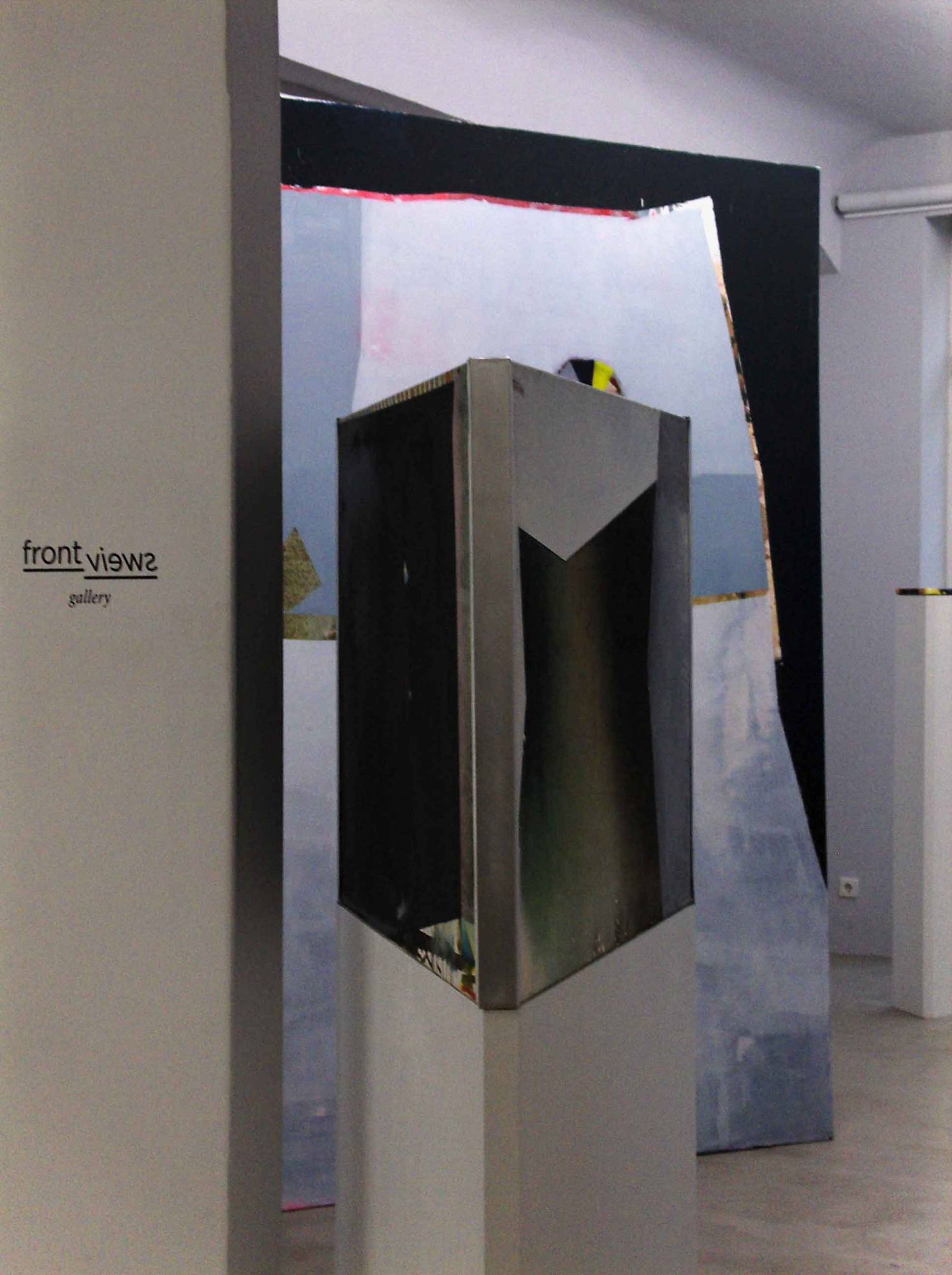


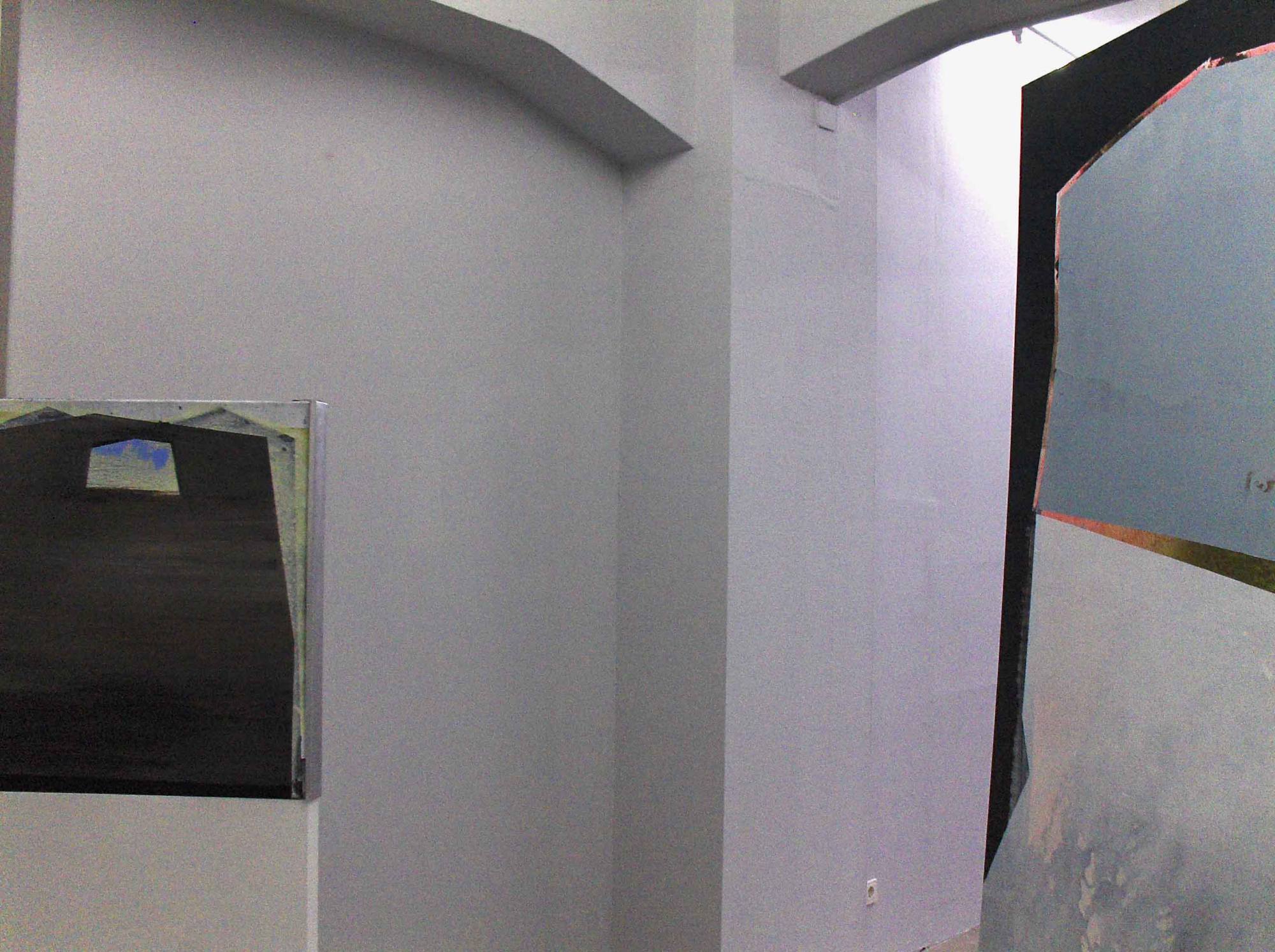
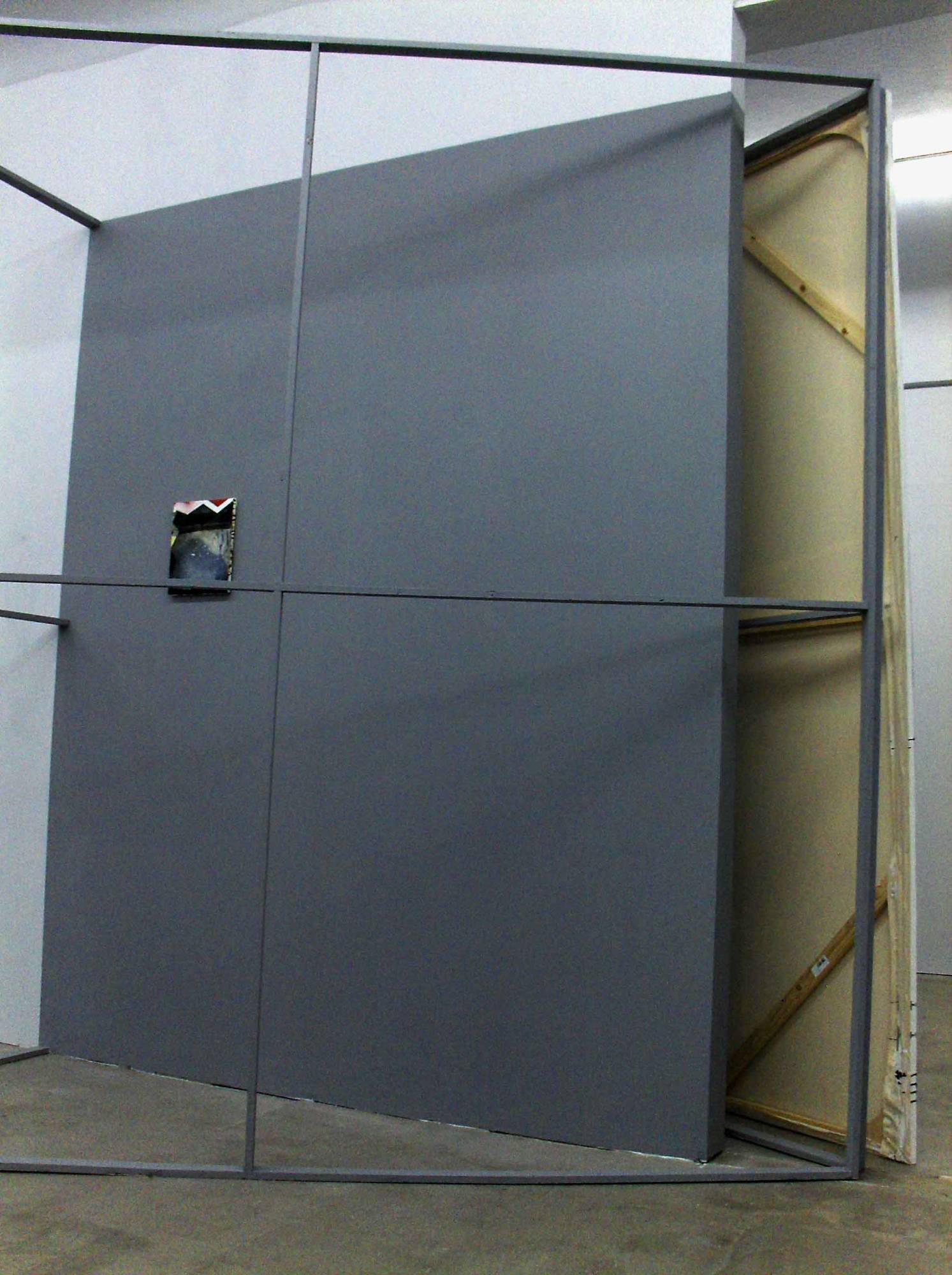
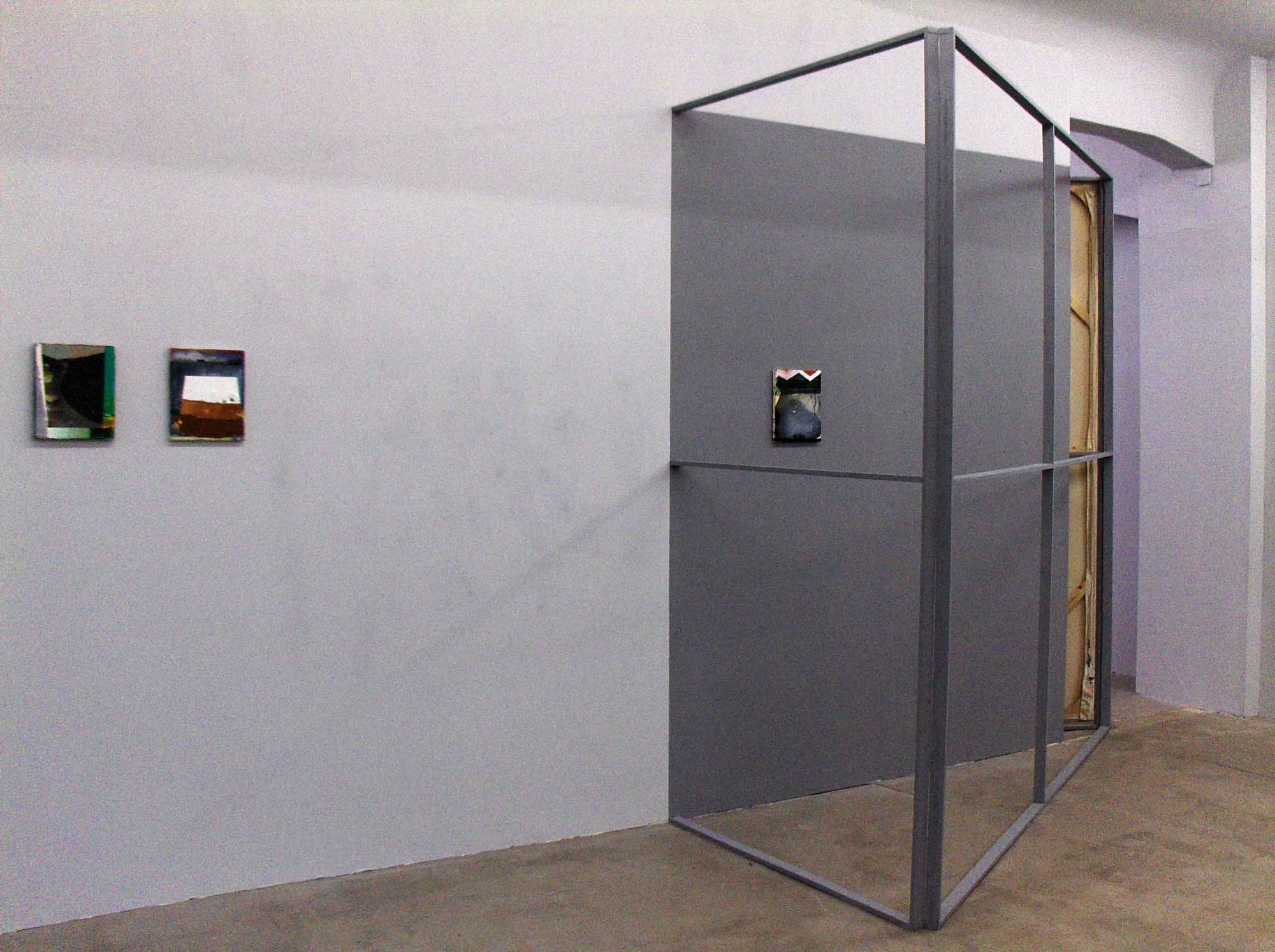
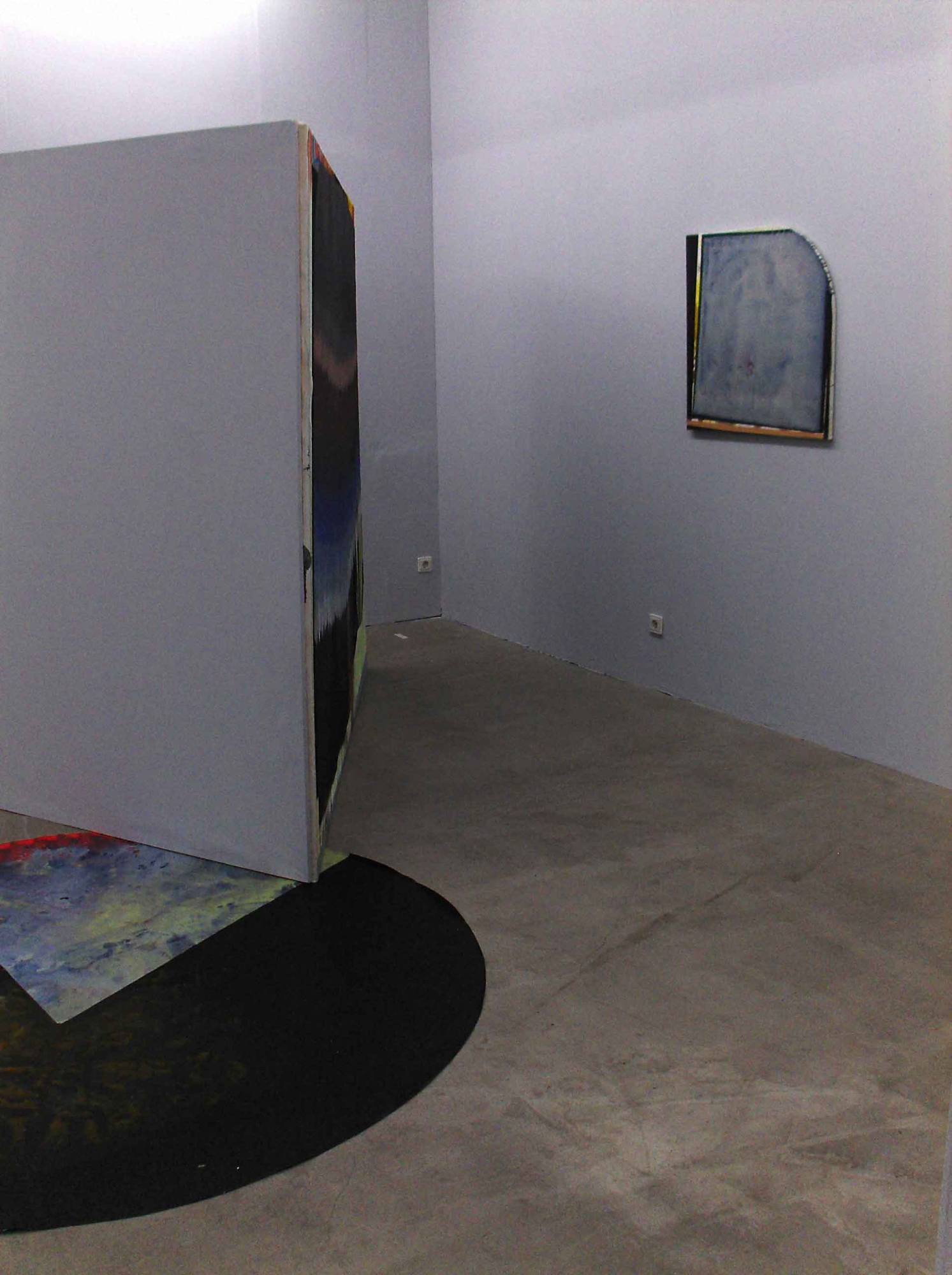
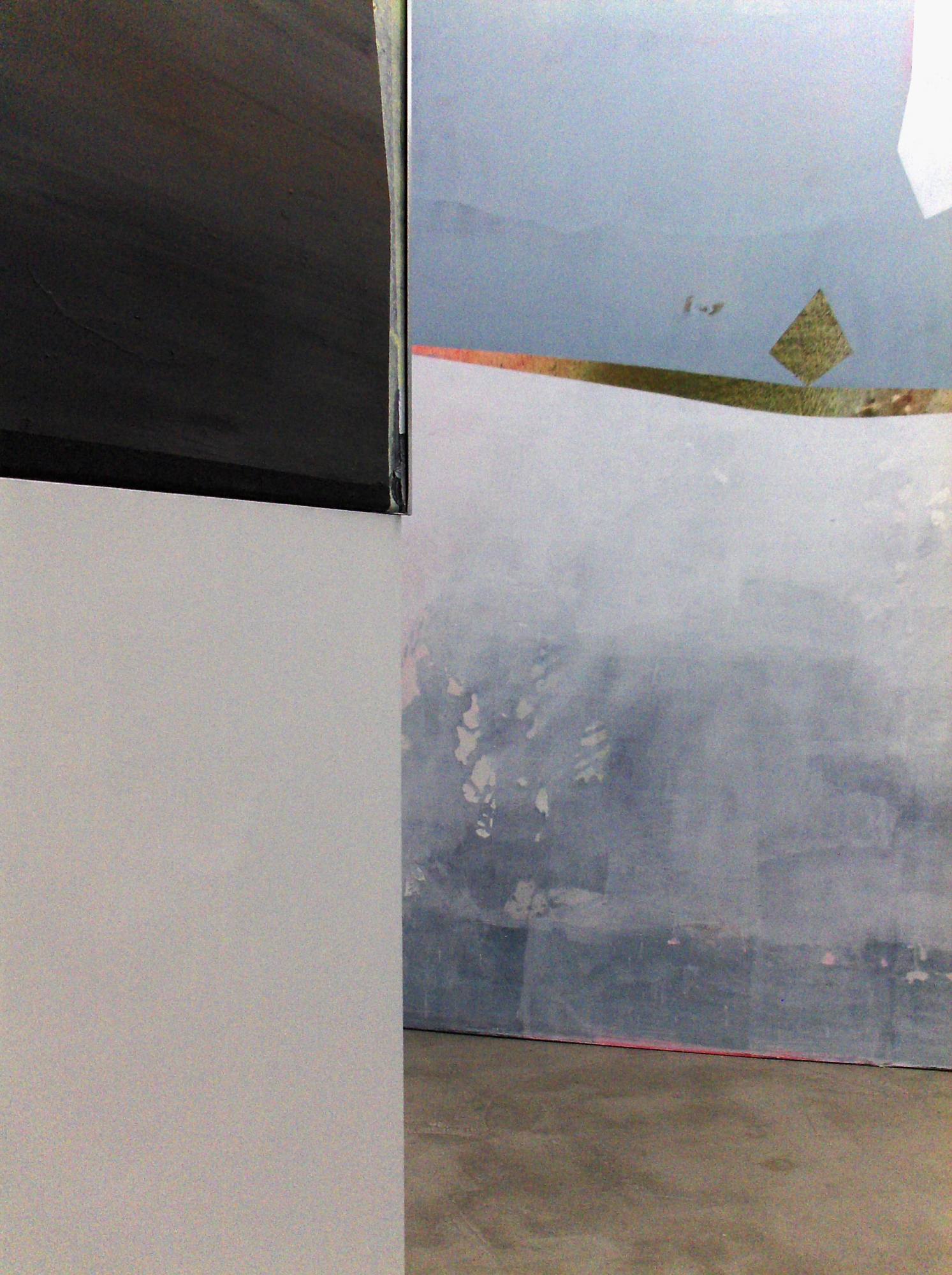
An ongoing ambition of art: to break the boundaries between painting and architectural space. In art history there are many versions of wall paintings and drawings, spacious and shaped canvases installed in such as way so to connect form and colour with the exhibition room.
Kathrin Köster analyses this topic in a new way. She uses the most significant components in this set of difficulties: the finished painting stretched on woodframe and the wall. Canvases are usually presented at a very small distance and parallel to the wall. Kathrin Köster’s pieces depart from this tradition. She does not hang the paintings on the wall, but places them into the setting. The canvases reach into the room, finding their position as objects or partitions, or are laid on pedestals. They are installed side by side with temporary walls, and combines with monocrome shapes of colour. These interfere with the clarity and purity of the white cube of the gallery space, and establish another frequency.
The results of this direct intervention is a whole new experience of space and painting. The viewer enters a situation in which spatial boundaries have become fluid. The walls are part of the painting and the canvases create a temporary architecture. With this the artist transforms the conditions of painting and its constitutive surrounding space more transparent, but also creates a very physical meaning. A kind of painting room is created, ready to enter, dealing with a new quality of unreal presence.
Kathrin Köster recieved the „Schulz-Stübner Preis“ for painting and the „Meisterschülerpreis“ of the Udk in 2010. Like all artists represented by the gallery she lives and works in Berlin.
___________________________________________________________
Kathrin Köster’s sitespecific installations question the spatial perception of painting. The interaction of visibility and imagination is put up for discussion.
Köster combines her paintings with sculptural and architectural elements which she fabricates especially for each new exhibition. Instead of offering frontal views of her paintings to the beholder, she mostly arranges her canvases in such a manner that their painted surfaces are only visible from extreme angles or out of very short distances. By doing that, the canvases’ edges, the texture of their backsides or their materiality come to the fore. For Köster her pictures are not only carrier of images, but bodies which create their own space and force the beholder to physically react to their appearance.
The paintings of Kathrin Köster keep up a perfect balance between informal painting and representational motives. They activate the beholder’s imagination and allow to free associate about their subject matter. This ambiguity of Köster’s images is additionally intensified by the spatial arrangement of the pictures. Those parts of their painted surfaces which appear distorted because of the canvases’ extreme spatial positions, or those parts where it’s even impossible to gaze at, have to be completed by the beholder’s imagination. By moving around the picture’s bodies these voids can be filled by impressions, the beholder is capable to find from other points of view. In Kathrin Köster’s installations the experience is brought to our attention, that the painting’s images we perceive on the one hand have their place within the objects we see and on the other depend on our personal point of view. They are shaped by the different modes of our bodily perception. In Kathrin Köster’s installations the depicted space, the real space and the space of our imagination interpenetrate themselves.
Dietmar Kohler
